Top 13 Largest Diamond Mines in the World by Production & Reserve
| Table of Contents |
What is Diamond
Crystalline diamonds are a solid form of carbon with its atoms arranged in a perfect lattice. Most form between 93 and 155 miles below the surface of the earth, though in rare cases, others can form as deep as 500 miles.
Volcanic eruptions then bring them to the surface, where they are deposited in igneous rocks. The astonishing truth is that the average diamond is between one and three and a half billion years old. Furthermore, their hardness surpasses that of any other naturally occurring substance.
The "normal color range" describes the majority of diamonds. These can be any variation of white, colorless, light yellow, or brown. Fancy color diamonds are those that have a less common hue, such as red, green, or blue. But the red diamond is the rarest of all diamonds. Red diamonds have an unusual atomic arrangement due to a rare occurrence during their formation. Because of this, the light that gets through takes on stunning red tones.
Countries with the largest diamond reserves
About 600 million carats of natural diamonds were thought to be stored in Russia. This means that Russia has the largest diamond reserves in the world. Rough diamonds are used in industry almost exclusively, accounting for nearly half of all mined diamonds. Cut, drill, grind, and polish are just some of the many uses for industrial diamonds.
Russia: Unquestionably, one of the world's major diamond producers is Russia. According to reports, Russia may possess the largest diamond reserves in the world, totaling almost 1.1 billion carats.
Botswana: The second-largest diamond producer in the world is Botswana. The nation is thought to have a 300 million carat diamond reserve as of 2021.
Democratic Republic of Congo: The third-largest producer of diamonds in the world is the DRC. It generated 12 million carats of diamonds as of 2020. There are reportedly diamond reserves there totaling more than 300 million carats.
Diamond Industry in the World
As of 2023, the largest diamond reserves in the world were held by Botswana and Russia, totaling 300 million and 600 million carats, respectively. The world's two largest producers, measured by production volume, are Russia and the Democratic Republic of the Congo. In 2022, the Democratic Republic of the Congo produced 11 million carats of diamonds, while Russia mined 17 million carats. Rough diamond demand is rising globally and is anticipated to reach 292 million carats by 2050.
Despite a decline since the global financial crisis of 2008, the diamond mining sector continues to make a sizable contribution to the GDP of a number of nations. The average number of carats of diamonds produced annually between 2005 and 2008 was 171 million, whereas the average over the subsequent 11 years is just under 132 million (with 2019 producing 142 million).
The top 50 biggest mines are thought to produce about 90% of the diamonds in the world. The following list of the top ten diamond mines in the world by production in 2023/2024 is based on data from the most recent GlobalData mining database as well as other sources (ranked and suggested by KnowInsiders.com).
Check more: Top 10+ Largest Gold Mines in the World by Production
Top 10+ Biggest Diamond Mines in the World Today
1. Jwaneng Diamond Mine in Botswana
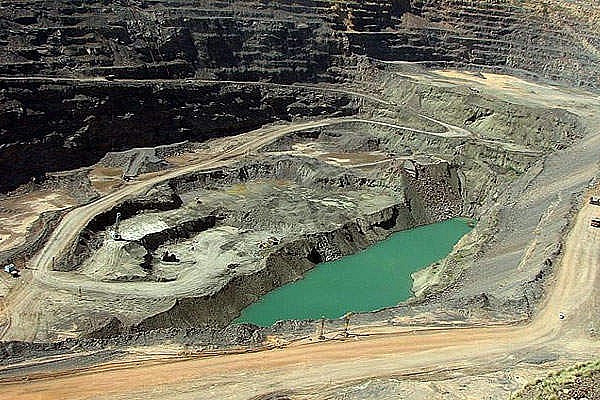 |
| Jwaneng Diamond Mine in Botswana |
About 160 miles southwest of Gaborone in South Central Botswana is where you'll find the Jwaneng diamond mine. The mine is owned by Debaswana, a joint venture between De Beers Company and the government of Botswana.
In 2023, the greenfield mine is anticipated to produce 13.5 million carats of diamond. Till 2036, the mine will be in operation.
With 10,319 kct, Jwaneng—which means "a place of small stones"—tops our list for production. The Jwaneng pipe, which is situated in the Naledi River Valley in southern Botswana, was first identified in 1972 and started to function fully ten years later. The Jwaneng mine is a part of the Anglo American portfolio and is run by Debswana, a joint venture between De Beers and the Botswanan government. The largest underground diamond mine in the world will be built in Jwaneng thanks to a $6 billion investment from Debswana.
Three kimberlite pipes that extend across a surface area of 520,000 square meters are mined, along with a satellite deposit.
The Jwaneng diamond pipe is currently 300 meters deep, but it will eventually reach a depth of 675 meters. It was found in 1972, and by July 1982, it was producing at its maximum capacity. Inauguration day for the mine was in August 1982.
2. Kao Diamond Mine in Lesotho
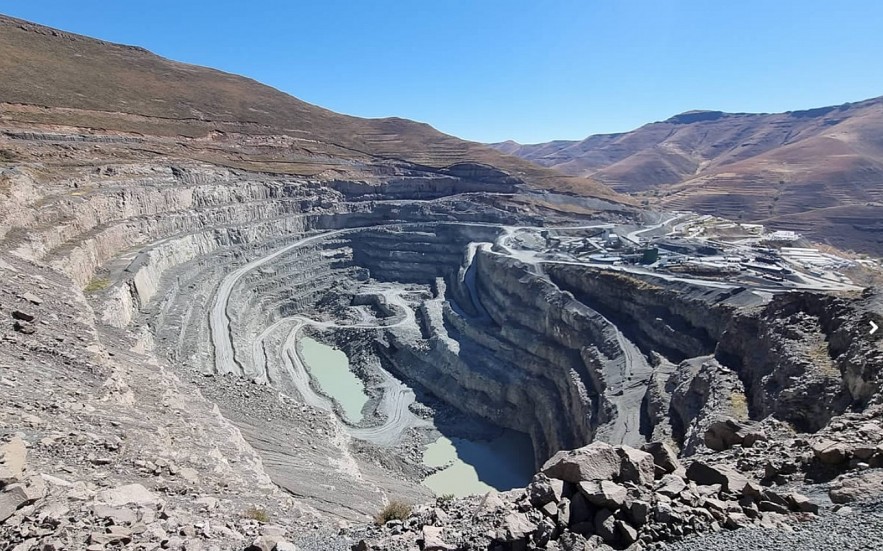 |
| Kao Diamond Mine in Lesotho |
Namakwa Diamonds is the owner of the Kao Mine, which is situated in Butha-Buthe, Lesotho.
In 2023, the surface mine is anticipated to produce 13.34 million carats of diamond. Till 2034, the mine will be in operation.
SMD's Kao open pit mine, which is one of the highest gemstone operations in the world and, statistically speaking, has the largest undeveloped diamondiferous-bearing pipe in Lesotho, is located at a height of about 2,500 meters above sea level.
The Butha Buthe Plateau, one of the most important local cultural heritage sites for the Basotho, gives the town of Butha Buthe, which is located alongside the Hlotse River (Caledon River), its name. Unquestionably one of the area's top attractions is the Butha Buthe Plateau. It is a sandstone plateau with a flat top, and its peak offers an absolutely breathtaking view with the Maluti mountains serving as the perfect backdrop.
Storm Mountain Diamonds Kao mine runs amidst this breathtaking setting.
In the middle to late 1950s, Colonel Scott and his exploration team made the discovery of the Kao kimberlite. Since its discovery, cooperatives and individual miners have mined the Kao kimberlite.
Despite this, Kao Diamond Mines (Pty) Limited ("KDM"), a subsidiary of Global Resources Inc., purchased the mining lease for Kao from the Government of Lesotho in 2006. This may have been motivated by the success at Leteng at the start of the twenty-first century.
In 2010, Keith Whitelock and his team played a key role in redeveloping the Kao mine in a way that maximized benefits to the Basotho and to the Lesotho Nation, through employment opportunities and local development, while also creating an attractive financial environment for investors.
One of the distinctive memoirs in the Lesotho diamond mining history is SMD's success. The mine has been able to continue operations thanks to its committed and high-risk taking investors, visionary management, and committed team.
3. Orapa Mine in Botswana
The greenfield mine, which is owned by the Government of Botswana, is anticipated to produce 8.85 million carats of diamond by 2023. Till 2036, the mine will be in operation.
The 0.45 square mile Orapa diamond mine is one of the biggest diamond mines in the world. By 2026, it should be 1,150 feet deep compared to its current depth of 1,000 feet. The Orapa mine was established in July 1971 and is situated in Orapa, Botswana. Debswana, a joint venture between the government of Botswana and the De Beers mining company, is the company that owns the mine. In 1999, Orapa underwent an expansion that doubled its prior mining capacity. It now generates 40 million tons of waste rock annually in addition to 20 million tons of ore.
Approximately 10.8 million carats of diamonds, or 4,762 pounds, are also produced annually by Orapa. Incredibly, 17.3 million carats of diamonds were produced in 2006, setting a new record for production. The Damtshaa and Letlhakane diamond mines, two additional Debswana-owned mines, also have their ore processed by Orapa.
The Orapa mine is crucial to the neighborhood's economy. This is so that locals can get jobs; just between Orapa and Letlhakane, 3,100 people are employed. Debswana also contributes to the community by keeping a hospital open and financing educational opportunities for the kids of its employees. The money the mine brings in also enables the Botswana government to spend money on vital national services.
Orapa is a kimberlite pipe-based open pit mine that is situated between two of them. Diamonds are frequently found in the igneous rock known as kimberlite. Between 93 and 280 miles beneath the surface of the earth's crust, it naturally forms. Kimberlite pipes are vertical formations of the mineral. One of the most significant sources of diamonds in the world is kimberlite. It is thought that the Orapa kimberlite pipes formed 93 million years ago.
4. Venetia Mine in South Africa
The Venetia Mine is a surface and underground mine located in Limpopo, South Africa, and is owned by Anglo American Plc.
In 2023, the greenfield mine is anticipated to produce 5.83 million carats of diamond.
The fourth-ranked mine in South Africa, Venetia by Anglo American, produces 4,567 kct. The Venetia mine was initially intended to be an open pit, but in 2013, work on an underground extension project got underway with the goal of extending the mine's life to 2046 while ramping up production.
5. Gahcho Kue Project in Canada
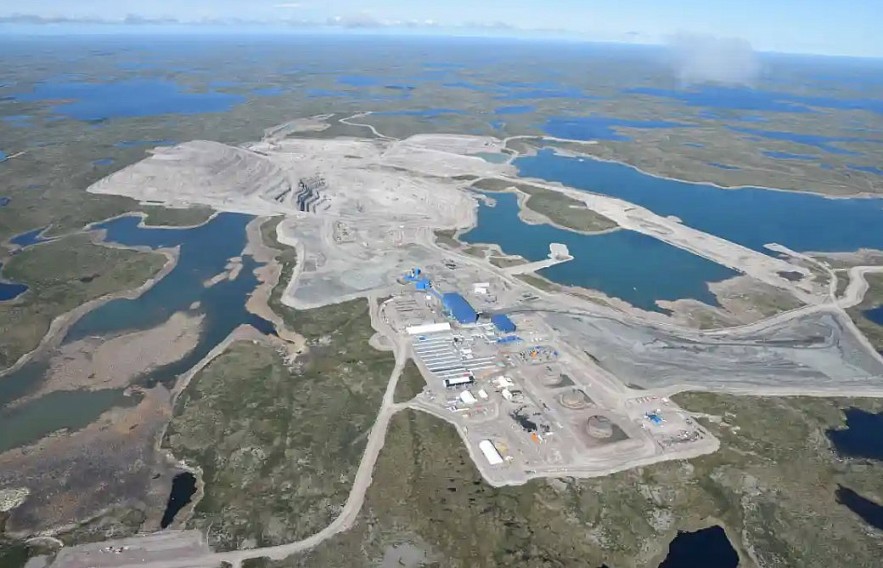 |
| Gahcho Kue Project in Canada |
In Canada's Northwest Territories, there is a surface mine called the Gahcho Kue Project. Gahcho Kué, which translates to "Place of the Big Rabbit" in Dene Suline, is the traditional Chipewyan name for the Kennady Lake region. The Métis of Fort Resolution and the Dene from utselk'e have historically used the region, which is also known for its Barren-Ground caribou. The area was previously used by Tch (Dogrib), who are also Dene.
In 2023, the greenfield mine is anticipated to produce 5.52 million carats of diamond. The mine should continue to run until 2030.
De Beers Canada (51%) and Mountain Province Diamonds (49%) are partners in the Gahcho Kué Diamond Mine.
The Gahcho Kué kimberlite pipes, which are located beneath Kennady Lake, make up the mine, which made its official debut on September 20, 2016. Additionally, there are a number of unexplored kimberlite occurrences dispersed over a large area.
For Mountain Province Mining Joint Venture (now Mountain Province Diamonds), Canamera Geological started sampling and surveying the area in 1993. In 1995, a camp was established in the area as part of exploration efforts. When Monopros joined the Mountain Province Mining Joint Venture in 1997, the camp was taken over by De Beers Canada, now a subsidiary of Monopros. De Beers started sampling the kimberlite in 1998 in order to assess the four Gahcho Kué pipes. The decision to move forward was made after additional drilling yielded promising results.
As the EPCM engineering company, Hatch started the construction in 2013. Production at The Mine commenced in 2016. Open pits, a plant that concentrates and recovers kimberlite ore into rough diamonds, and support structures like a camp, an airport, and other infrastructure make up the site. The 5034 and Hearne pits will be operating at full capacity by 2020, and initial sampling at the Tuzo pit has started. De Beers Group revealed plans for the mine to achieve carbon neutrality by 2030 in 2020.
6. Ekati Diamond Mine in Canada
The Lac De Gras area of Canada's Northwest Territories is home to the surface and underground mine known as the Ekati Diamond Mine. Diamond reserves in Ekati are thought to total more than 106 million carats.
The greenfield mine, which is owned by Arctic Canadian Diamond, is anticipated to produce 5 million carats of diamond in 2023. Till 2028, the mine will be in operation.
In Ekati, there are numerous surface and underground mines. But the ones that are currently in use are Lynx, Misery, Pigeon, Koala, and Sabre. While open-pit mining is used at the Lynx, Pigeon, and Sabre mines, underground mining is used at the Koala and Misery mines.
The Ekati mine's current lifespan, according to some estimates, is 2034. However, initiatives have been made to extend the mine's life until 2042.
7. Jubilee Mine in Russia
ALRO is the owner of the Jubilee Mine, which is situated in the Russian Sakha (Yakutia) Republic. In 2023, the surface mine is anticipated to produce 4.99 million carats of diamond. Till 2030, the mine will be in operation.
Due to high production rates at other mines over the past few years, Jubilee, which once held the title of largest diamond mine in the world, has slipped to seventh place.
9 million carats were thought to have been produced by the mine in 2015. With the addition of speculative underground reserves, it might still turn out to be the world's largest diamond deposit. Jubilee has been produced since 1986 and was found in the Yakutia region of northern Russia. With production rates and revenues that are more than twice as high as those of the Grib mine, it is still Russia's most productive mine.
8. Diavik Diamond Mine in Canada
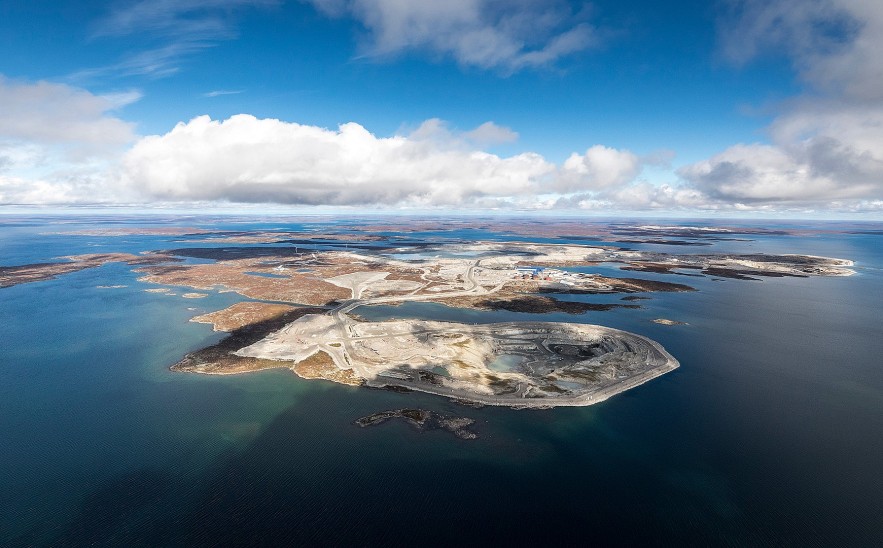 |
| Diavik Diamond Mine in Canada |
Some of the most stunning and sought-after diamonds in the world are located at the base of Lac de Gras in Canada's Northwest Territories, about 200 kilometers south of the Arctic Circle.
We own and operate the Diavik Diamond Mine, which consists of four pipes that contain diamonds. We mine these pipes using both open pit and underground methods. Our Diavik diamonds are gorgeous white gems that were created with the utmost integrity and safety.
The brownfield mine, which is owned by Rio Tinto, is anticipated to produce 4.28 million carats of diamond in 2023. Till 2025, the mine will be in operation.
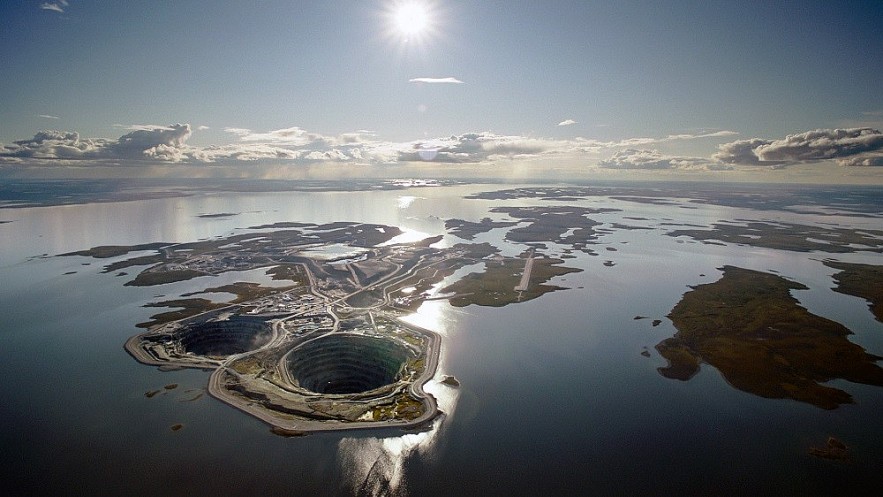 |
| Diavik (Rio Tinto) |
The sub-arctic tundra is one of the most difficult environments in the world, one of the most pristine environments with one of the most delicate ecosystems. Diavik's design, construction, and operation are a story of success on a grand scale.
Since the beginning, Diavik has prepared for its closure because all mines have a limited lifespan. Buildings on the property were made with removal in mind. Additionally, after mining is finished, the embankments will be reclaimed, allowing lake water to reenter the open pit.
9. Udachny Mine in Russia
 |
| Udachny Mine in Russia |
The Udachny Mine is an underground mine that belongs to ALRO and is located in the Sakha (Yakutia) Republic of Russia.
In 2023, the greenfield mine is anticipated to produce 3.74 million carats of diamond. The mine is anticipated to close in 2037.
It consists of the Verkhne-Munskoe pipe, the Udachny pipe, and the Ziarnista pipe. More than 164 million carats of diamonds total over the course of these deposits.
Udachny, the largest Alrosa-owned diamond mine, came in third with 4,649 kct. In the Sakha Republic region of Russia, just outside the Arctic Circle, is the town of Udachny. The first phase of the mining and processing complex, which was discovered in 1955, was put into operation in 1976. Udachny, which is currently third in depth behind Chuquicamata and Bingham Canyon Mine, has a depth of more than 630 meters.
At the Udachnaya pipe, open-pit operations started in 1971. The reserves had run out by 2016. On the other hand, the Zarinista pipe is a conventional truck and shovel open-pit mining operation.
Five pipes, named Poiskovaya, Deimos, Zapolarnaya, Novinka, and Komsomolskaya-Magnitna, are part of the Verkhne-Munskoe deposit. The first diamond of gem quality was extracted from the Zapolarnaya pipe in 2018.
10. Vladimir Grib Project in Russia
In Russia's Arkhangelsk Oblast, there is a surface mine called the Vladimir Grib Project. One of the biggest diamond mines in the world and in Russia is the Grib mine.
The greenfield mine, which is owned by Otkritie Holding, is anticipated to produce 3.35 million carats of diamond by 2023. The mine should continue to run until 2033.
The Andrei Vasilievich Sinitsyn-led exploration team's post-graduate member Vladimir Grib, who passed away before the mine was discovered, is remembered by the Grib diamond pipe. The mine is situated in the Arkhangelsk Oblast in the country's northwest. The mine has estimated diamond reserves of 98.5 million carats and a 3.62 million carat annual production capacity.
11. Aikhal Mine in Russia
In Yakutia, Russia, one of the biggest mines in the world is called Aikhal. Deposits include Zaria Pipe, Aikhal Pipe, Jubilee Pipe, and Komsomolskaya Pipe, among many others. They contain an estimated 175 million carats worth of diamonds collectively.
This diamond mine is managed by the Alrosa mining and processing division of the Russian diamond business.
The Aikhal pipe is mined using the cut and fill method of underground mining, whereas the Jubilee and Komsomolskaya pipes are mined using open-pit techniques.
The Zaria pipe, on the other hand, is currently under development and is anticipated to mine using open-pit techniques and selective mining.
12. Nyurba Diamond Mine in Russia
Another open-pit mine in Nyurba, Russia is the Nyurba diamond mine. It is made up of three significant deposits: the Botuobinskaya pipe, the Maiskoye Kimberlite pipe, and the Nyurbinsakya pipe. More than 132 million carats of diamonds total are contained in them.
This mine is run by Alrosa's Nyurba mining and processing division.
The Nyurbinskaya pipe started to be mined in 2002, and an open-pit mining technique was used to do so. The same technique will even be used to mine the Maiskoye Kimberlite pipe.
Production has started following the 2015 removal of burdens from the Botuobinskaya pipe.
13. Catoca Mine in Angola
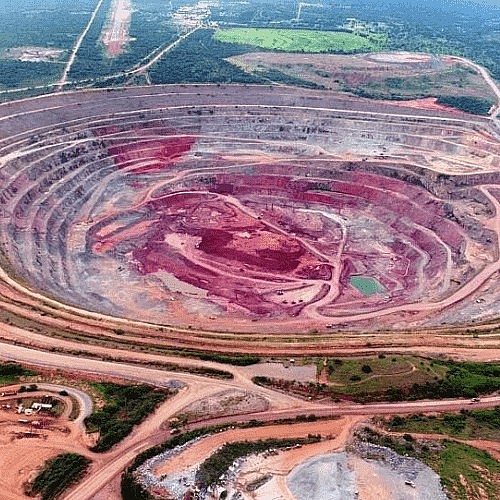 |
| Catoca Diamond Mine in Angola |
Near Suarimo, Angola, is where the Catoca mine is located. The estimated reserve of diamonds in this open-pit mine is 7 million carats. This mine's operating depth is greater than 245 meters at the moment.
This diamond mine is run by Sociedade Mineira De Catoca in collaboration with Alrosa, Endiama, and Lev Leviev.
Top 10 Most Largest Diamond Mines in the World by Reserve Amount
Russia is responsible for half of the world's largest diamond mines, which may come as a surprise to you. While Africa and Australia may come to mind first when you mention gem mining, the largest diamond producer is actually Russia. Based on their total reserves, these are the ten most successful diamond mines.
1. BOTUOBINSKAYA, RUSSIA
Botuobinskaya has nearly 71 million carats of diamond reserves, and the productive Nyurbinskaya mine is only three kilometers away. One of the four entries on this list that is entirely run by Alrosa, the government-owned diamond company of Russia, is Botuobinskaya.
2. ORAPA, BOTSWANA
With nearly 86 million carats of diamond reserves, Orapa boasts one of the largest kimberlite pipes in the world. Despite being lower on this list in terms of reserve, Orapa produces some of the best annual numbers.
3. JWANENG, BOTSWANA
There are just over 88 million carats of diamond reserves in this open-pit mine. De Beers and the Botswana government have a joint ownership interest in it. It hasn't reached its full depth yet, like many others on this list, with open-pit operations going deeper than 350 meters, but it will eventually get close to an estimated depth of 625 meters.
4. GRIB, RUSSIA
With 98 million carats of diamond reserves, Grib has just started operations in earnest. Production is expected to be slow at first, and will rely on open-pit operations until 2030.
5. VENETIA, SOUTH AFRICA
Venetia is South Africa's biggest diamond mine, with estimated reserves of 102 million carats. It has been producing since 1992, and De Beers owns it. Venetia is still engaged in open-pit mining at the moment but will soon transition to underground mining.
6. CATOCA, ANGOLA
130 million carats of recoverable diamonds are thought to be present in the sixth-largest diamond mine in the world. Operating since 1993 is Catoca. Angola's state-owned Endiama, Russia's state-owned Alrosa, China's state oil company Sonangol, and a Brazilian company by the name of Odebrecht all share operation of the mine. Although the final depth is anticipated to exceed 600 meters, Catoca is continuing with open-pit operations that have reached a depth of more than 200 meters.
7. ARGYLE, AUSTRALIA
If you only take JORC reserves into account, the Argyle mine in Western Australia actually holds the title of largest diamond mine in the world. At 140 million carats, the recoverable reserve falls short of three Russian sites. The transition from open-pit to underground mining operations is nearly complete at Argyle. However, its open-pit mine is legendary, having produced well over 791 million carats of diamonds over the course of its existence.
8. MIR, RUSSIA
Russia now occupies the top spot on this list for the first time. These top three contenders are all found in Yakutia, a part of Russia. Diamond reserves in Mir are thought to total 141 million carats. The state-owned mining company in Russia, Alrosa, is in charge of running Mir. Mir, which was established in 1957, ended its open-pit mining operation in 2001 but began its underground mining operation in 2009.
9. UDACHNY, RUSSIA
Udachny is the second-largest diamond mine in the world based on reserve size. It is estimated that 152 million carats are recoverable. Udachny is run by Alrosa, a state-owned company in Russia. It was discovered in 1955, just like Mir. Despite being one of the world's deepest open-pit mines, operations have recently changed from an open-pit strategy to a more concentrated underground operation.
10. JUBILEE (YUBILEYNY), RUSSIA
The biggest diamond mine in the world is this one. It has reserves of diamonds totaling an estimated 153 million carats that are thought to be recoverable, as well as additional, possibly undiscovered reserves. Jubilee is ultimately managed by Alrosa, Russia's state-owned diamond company, just like the other Russian entries in this list. The mine has only been producing since 1986, making it relatively new. Even at half of its depth, the open-pit mine is not yet in operation. The mine runs at 320 meters right now. The final anticipated operating depth ought to be 720 meters. According to JORC reserve estimates, Udachny is rated as being larger than Jubilee, but not by reserve size. These are just two different methods of determining the mine's potential.
Active Diamond MinesSome of the key active diamond mines are Jwaneng Mine, Gahcho Kue Project, Venetia Mine, Udachny Mine, and Cullinan Mine among others. Development Diamond ProjectsSome of the key diamond development projects are Jay Project, Venetia Underground Project, Karowe Expansion Project, Mazaruni River Project, and Luele Project among others. Exploration Diamond ProjectsSome of the key diamond exploration projects are Lomonosov Pipe Project, Kennady North Project, WO Property, IGE Tshikapa Project, Tonguma Project, and Bunder Project among others. |
Conclusion
Diamonds are widely used in jewelry and are considered to be one of the world's most aesthetically pleasing materials. In the wake of the global economic recovery from the pandemic, the diamond industry emerged as a clear victor.
Naturally occurring in the Earth's core, they are so rare and valuable that they fetch prices far above those of gold. Mining is the primary method used to discover and obtain diamonds from the earth.
Due to natural depletion of existing deposits and a lack of new capacity additions, it was predicted that rough diamond production in 2022 would amount to 117.5 million carats (Mct).
In January of 2022, the world's diamond reserves were estimated to be 1.8 Bct. More than 92% of the world's total was produced in just four countries: Russia, Botswana, the Democratic Republic of the Congo, and South Africa. Recent years have seen an increase in global reserves as a result of significant discoveries in Russia, Botswana, and South Africa. The diamond reserves in Orapa, Jwaneng, Udachny, Catoca, and Ekati are among the world's largest.
The four largest diamond-producing countries in the world—Russia, Botswana, Canada, and the DRC—will account for more than 77% of global output in 2022.
Only about fifty diamond mines remain open today. In addition, 30 of them are no longer in use. Botswana and Russia are the two largest producers, each accounting for about a fifth of the annual total of about 133 million carats. How massive would a diamond mine have to be to yield such a large quantity?
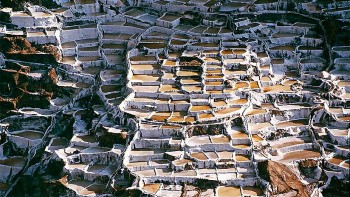 Top 10 Largest Underground Salt Mines in the World Top 10 Largest Underground Salt Mines in the World Let's explore the largest underground salt mines in the world today. These salt mines are also a tourist destination visited by many tourists. |
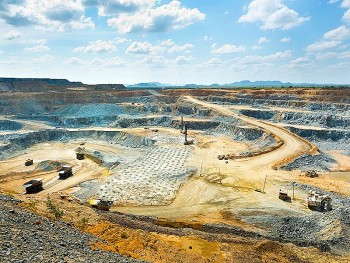 Top 10 Largest Platinum Mines in the World Top 10 Largest Platinum Mines in the World There are more than 68 platinum mines in operation globally today. Join KnowInsiders.com to explore the 10 largest platinum mines in the world that are ... |
 Top 10+ Largest Cobalt Mines in the World Top 10+ Largest Cobalt Mines in the World There are currently more than 89 cobalt mines open for business across the world. Learn more about the top 10 largest cobalt mines that are ... |
























